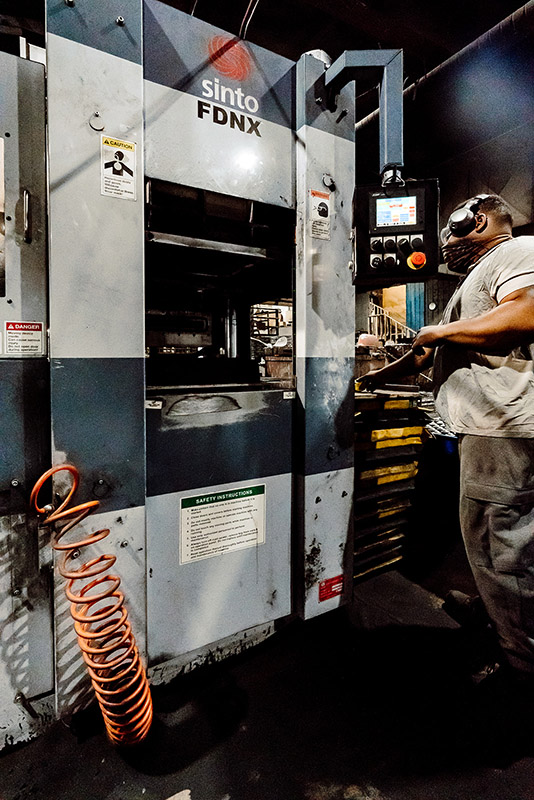Sand Casting
Sand Casting
Aluminum casting in sand molds is an efficient metal casting process in which sand is the mold material. Over 70% of the world’s metal castings use the sand casting process. It is highly efficient and cost-effective; 90% of the molding sand is reclaimed and reused, reducing waste and cost.
The sheer strength of a sand mold means that a much greater weight of metal can be poured into it, allowing for casting complex components—components that might otherwise need to have been fabricated from individual parts. Patterns can be created for 4-10x lower initial setup costs when compared to die casting and permanent mold casting methods.
The two most common sand casting processes are green sand and air set (no bake).
Green Sand Casting starts with a pattern of the part to be made, typically machined (or now 3D printed) from plastic or billet aluminum. Sand is squeezed into two halves of the pattern, any cores (a process that allows parts to be “hollow”) required are put in place, and then the pattern is removed. The sand from the top (cope) and bottom (drag) are then pressed together and molten metal is poured into the negative imprint of the part in the sand.
After cooling, the sand shell is broken away and the sand is recycled for reuse. Parts are then heat treated (if applicable), “cleaned” (saw, ground, and shot blast) and any secondary finishing is completed (machining, painting, etc.). Cast aluminum is an excellent candidate for wet paint, E-coat, and powder coating.
We have capabilities to run patterns up to 16”x20” on our automatic molding machine, can run patterns up to 40”x36” on our large roto-lift, and can floor mold up to 60”x60” (although other larger configurations can also be done).
Air Set Casting (no bake) is typically used for larger castings with more complex configurations or very low volume runs. Molds are comprised of chemically bonded dry sand that is mechanically mixed with binders to produce a hardened sand mold. We use 100% virgin sand to create the absolute best surface finish that sand casting allows.
This process allows customers with demanding combinations of size and complexity to attain the desired end product in a single casting, often with very short (a few weeks) turnaround time.
Similar to green sand casting, the top (cope) and bottom (drag) is filled with sand, although in this case the sand has a chemical bonding agent that cures to create a “rock hard” mold. We then remove the pattern from the two mold halves, put them back together, and fill the mold with quality molten metal. Once the metal solidifies and cools, we break the sand away and finish processing the casting.

